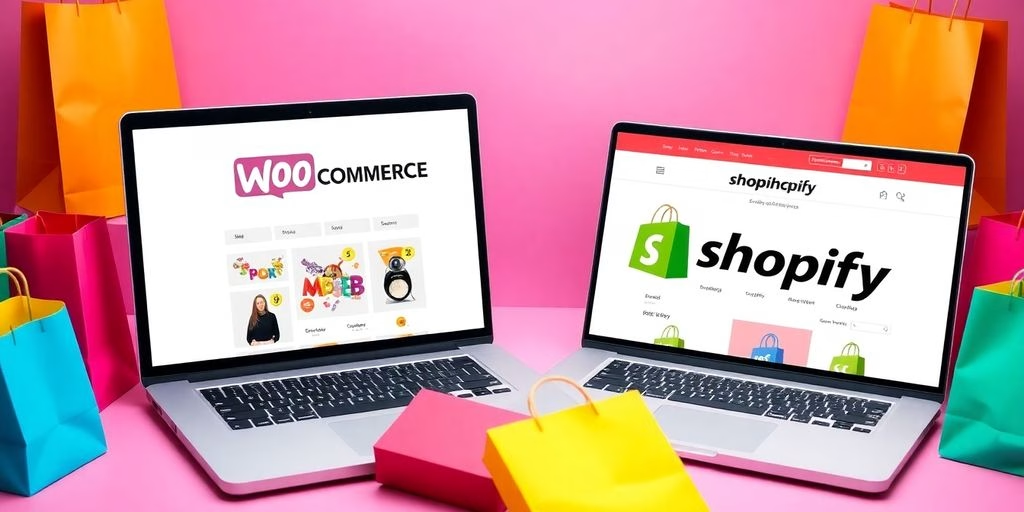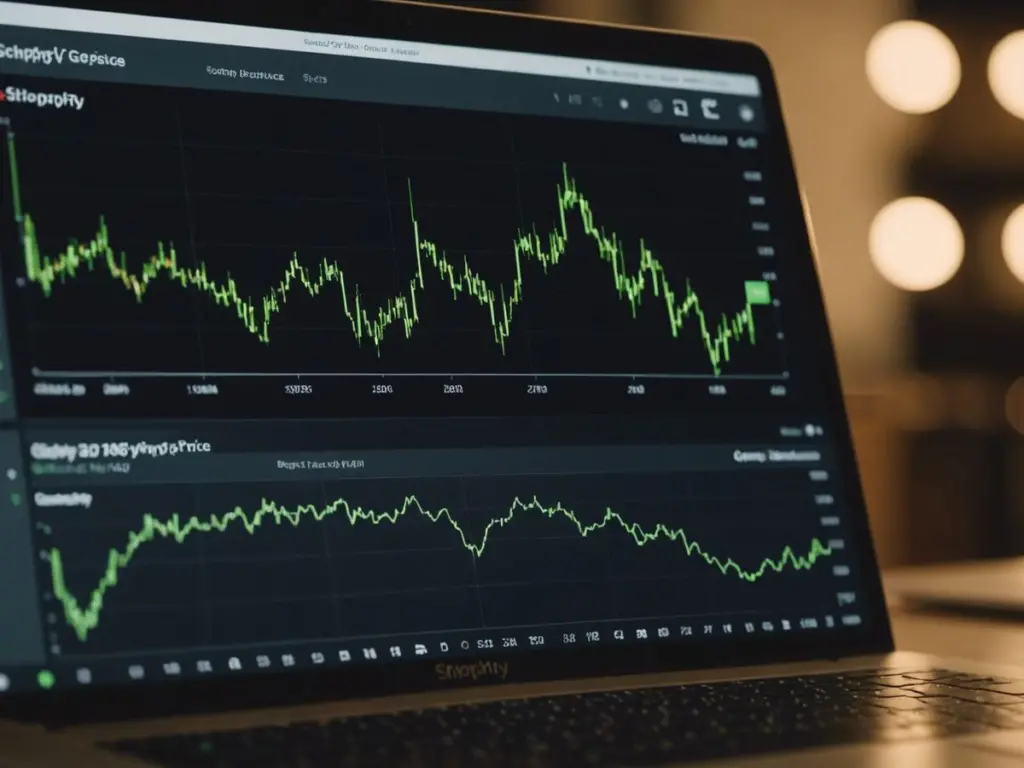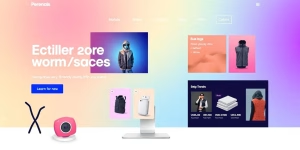Embarking on your e-commerce journey with Shopify offers a world of potential for business growth and innovation. By understanding the intricate details of Shopify prices and associated costs, you can make informed decisions that align with your business goals and budget constraints. Remember, the key to maximizing value on Shopify lies in meticulous planning, strategic investment in essential tools and services, and a keen focus on cost-effective marketing strategies.
Table of Contents
ToggleKey Takeaways
- Understanding Shopify’s different pricing plans helps in choosing the right one for your business needs.
- Hidden costs like transaction fees and app integrations can add up, so it’s essential to account for them.
- Starting with a basic plan and upgrading as your business grows can be a cost-effective strategy.
- Leveraging Shopify’s built-in features can save money on third-party apps and services.
- Real-life case studies can offer valuable insights and lessons for optimizing your Shopify store.
The Shopify Pricing Model Unveiled
Shopify operates on a subscription-based model, offering several plans tailored to meet the needs of businesses at various stages of growth. Let’s dive into what each plan entails and how to choose the one that aligns with your business objectives.
Decoding Basic Shopify Plan
The Basic Shopify Plan is the starting point for many small e-commerce businesses. It offers essential features to get your online store up and running, including a user-friendly interface, customization options, and mobile-friendliness. However, it’s important to be aware of the limitations that come with a basic plan, such as higher transaction fees and fewer advanced features.
Advanced Shopify: Is It Worth It?
The Advanced Shopify Plan is designed for growing businesses that need more robust features. This plan includes advanced reporting, lower transaction fees, and more extensive customization options. While the cost is higher, the additional features can provide significant value for businesses looking to scale.
Shopify Plus: For the Big Leagues
Shopify Plus is the top-tier plan, aimed at large enterprises with high-volume sales. It offers the most advanced features, including dedicated support, enhanced security, and the ability to handle large-scale operations. This plan is ideal for businesses that require a highly scalable and reliable platform to support their growth.
With a clearer picture of the financial investment required, you’ll be better positioned to strategize your business’s launch or growth phase, ensuring your venture into e-commerce is as smooth and successful as possible.
Hidden Costs You Didn’t See Coming

Transaction Fees: The Silent Profit Eater
When you think you’ve nailed down your budget, transaction fees sneak in like a silent profit eater. Shopify charges a fee for every transaction unless you use Shopify Payments. These fees can add up quickly, especially if your sales volume is high. Here’s a quick breakdown:
| Plan | Transaction Fee |
|---|---|
| Basic Shopify | 2.0% |
| Shopify | 1.0% |
| Advanced Shopify | 0.5% |
App Integrations: The Sneaky Add-ons
Shopify’s app store is a treasure trove of functionalities, but beware of the sneaky add-ons. While some apps are free, many come with a monthly fee. Popular apps like Advanced Wishlist and VolumeBoost can enhance your store but also inflate your costs. It’s easy to get carried away, so keep an eye on your app expenses.
Shipping Costs: More Than Just Postage
Shipping costs are more than just postage. They include packaging, insurance, and even handling fees. If you’re not careful, these can eat into your profits. Consider using Shopify Shipping to get discounted rates and streamline your process.
Always factor in these hidden costs when planning your budget. They can make a significant difference in your overall expenses.
Choosing the Right Plan for Your Business

Selecting the right Shopify plan can feel like choosing the perfect pair of shoes—comfort, style, and budget all matter. Here’s a breakdown to help you decide which plan fits your business best.
Start Small: The Basic Plan
For those just dipping their toes into the e-commerce waters, the Basic Plan is your go-to. It’s affordable and offers all the essential features to get your store up and running. Think of it as your training wheels for the e-commerce journey.
Growing Pains: Upgrading to Advanced
As your business starts to gain traction, you might find the Basic Plan a bit limiting. Upgrading to the Advanced Plan offers more robust features like advanced reporting and third-party calculated shipping rates. It’s like moving from a cozy apartment to a spacious house—more room to grow!
Enterprise Solutions: When to Go Plus
For businesses that have hit the big leagues, Shopify Plus is the ultimate choice. It offers unparalleled customization, dedicated support, and advanced features that can handle high-volume sales. This plan is for those who are ready to play in the big leagues and need a platform that can keep up with their ambitions.
Pro Tip: Always start with a plan that meets your current needs and upgrade as your business grows. Overcommitting to a higher plan too early can strain your budget without providing immediate benefits.
Maximizing Value: Tips and Tricks

Utilizing Free Trials and Discounts
Who doesn’t love a good deal? Shopify often offers free trials and discounts, especially for new users. Make the most of these offers to explore the platform without committing financially. This is your chance to test different features and see what works best for your business. Remember, a visually appealing store can significantly influence customer experience and conversion rates.
Leveraging Shopify’s Built-in Features
Shopify comes packed with built-in features that can save you both time and money. From automated discounts to post-purchase upsells, these tools are designed to optimize your store’s performance. Prioritize apps based on the value they add to your business. It’s essential to invest in apps that either enhance the customer experience or streamline your back-end processes for efficiency.
Outsourcing vs. DIY: Cost-Benefit Analysis
When it comes to building and maintaining your Shopify store, you have two options: do it yourself or outsource. Each has its pros and cons. DIY might save you money upfront but can be time-consuming. On the other hand, outsourcing can be costly but frees up your time to focus on other aspects of your business. Use tools like Google Analytics and customer feedback for continual improvement.
Effective marketing strategies: Utilize social media, email marketing, and content marketing to attract and retain customers.
Quick Actions
- Theme Modifications
- Sync address
- Build your own box
Offers & Incentives
- Post-purchase upsell
- Automated Discounts
- Setup Automated Offers
- Discount Sync
- Promos for bundles
Analytics & Insights
- Cohort Tracking
- Google Analytics Integrations
- A/B Testing & Analytics
Email Marketing
- Custom Email Sequencing
- Optimized Email Templates
- Klaviyo & Mailchimp integrations
Real-Life Case Studies: Success Stories and Lessons Learned

From Zero to Hero: A Startup’s Journey
Starting from scratch can be daunting, but many startups have turned their Shopify stores into thriving businesses. Take, for instance, Carnivore Club, which began as a small venture and grew into a subscription box powerhouse. Their success lies in their ability to leverage Shopify’s ecommerce tools effectively.
Scaling Up: Mid-Sized Business Strategies
Mid-sized businesses often face unique challenges when scaling up. Battlbox, a company specializing in outdoor gear, managed to overcome these hurdles by utilizing Shopify’s advanced features. They focused on optimizing their mobile experience and implementing marketing magic strategies to boost sales.
Enterprise Excellence: Big Brands on Shopify
Even big brands find value in Shopify’s robust platform. Kitchen Center, for example, has successfully integrated Shopify Plus to handle their high-volume sales. Their approach includes a mix of flow-based and retention-based patterns to keep customers engaged and coming back for more.
Bold move: These companies didn’t just build a store; they built a brand. Learn from their strategies and apply them to your own business for e-commerce success.
- **Key Takeaways: **
- Leverage Shopify’s built-in features for growth.
- Optimize for mobile to capture a broader audience.
- Use advanced marketing strategies to scale effectively.
Avoiding Common Pitfalls
Navigating the Shopify landscape can be tricky, especially for new entrepreneurs. Here are some common pitfalls to avoid to ensure your journey is as smooth as possible:
Overestimating Your Needs
It’s easy to get carried away with all the bells and whistles Shopify offers. However, overestimating your needs can lead to unnecessary expenses. Start with the basics and scale up as your business grows. Remember, you can always upgrade your plan later.
Ignoring Hidden Fees
Hidden fees can be the silent profit eater in your Shopify journey. From transaction fees to app integrations, these costs can add up quickly. Make sure to read the fine print and understand all potential costs before committing to a plan.
Underutilizing Available Features
Shopify offers a plethora of features designed to help you succeed. However, many entrepreneurs fail to take full advantage of these tools. Whether it’s leveraging Shopify’s built-in features or utilizing free trials and discounts, make sure you’re getting the most bang for your buck.
Pro Tip: Regularly review your store’s performance and customer feedback to continually improve and avoid common mistakes.
By being aware of these pitfalls, you can navigate the Shopify ecosystem more effectively and set your business up for success.
Avoiding common pitfalls in your business journey can be challenging, but with the right guidance, you can navigate through them successfully. Visit our website to learn more about how we can help you achieve remarkable success together!
Conclusion: Wrapping Up Your Shopify Journey
Embarking on the Shopify adventure is like setting sail on a vast e-commerce ocean, full of opportunities and occasional financial whirlpools. By now, you should have a clear map of Shopify’s pricing landscape—from subscription plans to those sneaky extra costs. Remember, the key to navigating this sea successfully lies in meticulous planning and strategic investment. So, whether you’re a solo sailor or commanding a fleet, keep your budget compass handy and your eyes on the horizon. Happy selling, captain!
Frequently Asked Questions
What are the different Shopify plans available?
Shopify offers several plans including Basic Shopify, Shopify, Advanced Shopify, and Shopify Plus. Each plan comes with different features and pricing to suit various business needs.
Are there any hidden costs associated with Shopify?
Yes, aside from the subscription fees, you might encounter transaction fees, app integration costs, and shipping expenses. It’s important to factor these into your budget.
Is Shopify Plus worth the investment for large businesses?
Shopify Plus offers advanced features and greater customization options, making it a worthwhile investment for large enterprises looking for scalable solutions.
Can I try Shopify for free before committing to a plan?
Yes, Shopify offers a free trial period which allows you to explore the platform and its features before making a financial commitment.
How can I minimize transaction fees on Shopify?
You can minimize transaction fees by choosing Shopify Payments as your payment gateway, which eliminates additional transaction fees imposed by third-party gateways.
What should I consider when choosing the right Shopify plan for my business?
Consider your current business size, projected growth, required features, and budget. Starting with a basic plan and upgrading as your business grows is often a good strategy.









































































































